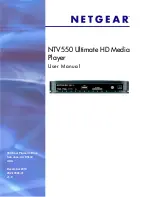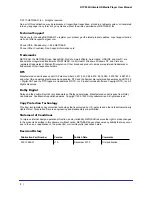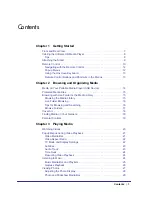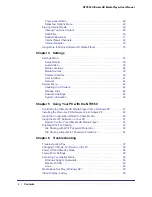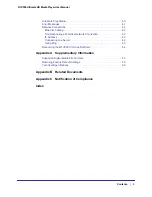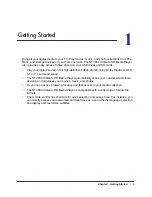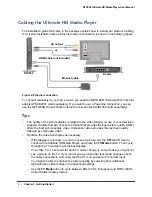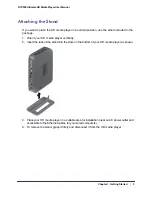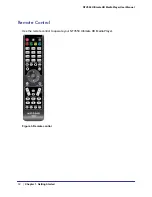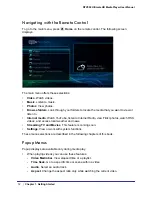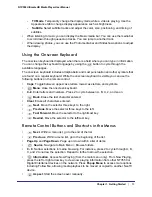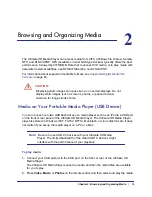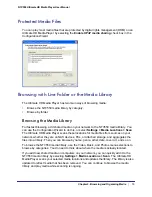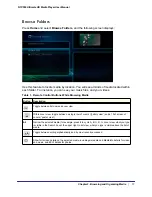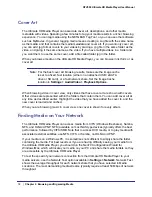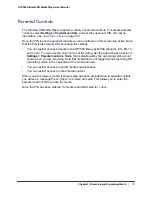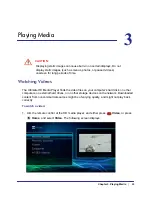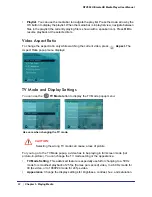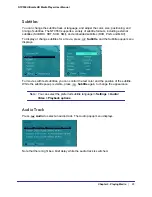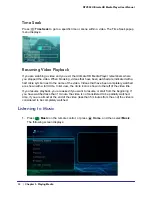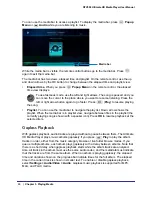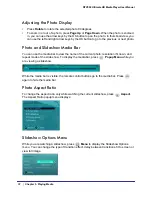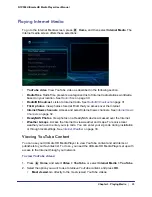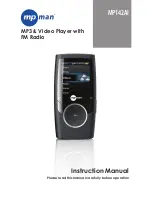
Chapter 2. Browsing and Organizing Media
|
14
2
2.
Browsing and Organizing Media
The Ultimate HD Media Player can access media from CIFS (Windows file shares), Samba,
NFS, and DLNA/UPNP. NFS (available on most NAS type devices) typically offers the best
performance, followed by CIFS/SMB. Note that to access DVD media, or to play media with
associated external subtitles, use NFS/CIFS/Samba, not DLNA/UPNP.
For information about supported media file formats, see
Supported Digital Media File
Formats
on page
65.
CAUTION:
Displaying static images can cause burn-in on certain displays. Do not
display static images (such as menus, photos, or paused videos)
onscreen for long periods of time.
Media on Your Portable Media Player (USB Device)
You can connect up to two USB flash drives or a media player such as an iPod to a USB port
on the front or rear panel of the Ultimate HD Media Player. The Ultimate HD Media Player
plays files stored in Windows (FAT, FAT32, NTFS), Macintosh, or Linux disk formats. It does
not matter if you set up the media player on a PC or a Mac.
Note:
Be sure to use USB 2.0 devices with your Ultimate HD Media
Player. The limited bandwidth of the older USB1.0 devices might
interfere with the performance of your playback.
To play media:
1.
Connect your USB product to the USB port on the front or rear of the Ultimate HD
Media Player.
The Ultimate HD Media Player scans the media, and then the media files are available
for you to play.
2.
Press
Video
,
Music,
or
Photos
on the remote control, and then select and play the media.

